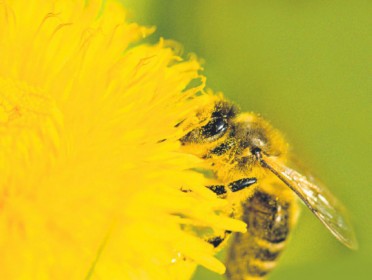
Around the globe, pollen counts are increasing and Australian Bureau of Statistics data suggests it could be affecting our health: 17.1 per cent of the Australian population reported hay fever symptoms in 2008, compared with 10.3 per cent in 1990. Meanwhile, the number ofasthma-related deaths among children more than doubled between 2006 and 2010. Some scientists believe climate change could be to blame for the rise in pollen. Associate Professor Paul Beggs, deputy head of the Department of Environment and Geography at Macquarie University, says: “There is generally earlier timing of spring events in both plants and animals. And earlier flowering is obviously related to earlier release of pollen into the atmosphere.”
In the last century, there has been a 0.8 degree Celsius rise in global temperatures. Climate-change advocates believe it is this rise that has brought about the shift in season timings. They point to the rising levels f carbon dioxide in the atmosphere as one of the causes of escalating global temperatures. May figures from the International Energy Agency found emissions of carbon dioxide from fossil-fuel combustion reached an all-time high last year. Whether there is a direct correlation between carbon dioxide levels, global temperatures and shifting seasons is still open for debate. What has been proven is that the behaviour of some flora is altering.
Plants: the facts
- They are blooming earlier. Research in the May edition of Nature used observational records, some more than 100 years old, alongside experiments, to examine 1600 plant species on four continents. The research showed, on average, earlier blooming by 0.5 to 1.6 days for every degree Celsius rise in global temperatures. Furthermore, 2010 research by the UK’s Woodland Trust compared 400,000 first flowering records with temperatures dating back to 1659. It showed some plants have flowered earlier in the last 25 years than at any other time.
- Certain plants are in bloom for longer. A 2011 study by the National Academy of Sciences in the US found the pollen season of ragweed (a plant that is also common in Australia) is between 13 and 27 days longer in some areas than it used to be. The Asthma and Allergy Foundation of America estimates 10 to 15 per cent of Americans suffer from ragweed allergy – that is a lot of people who could be affected for longer periods.
- Pollen counts reflect carbon dioxide levels. A study presented at the European Geosciences Union AGM last year analysed data from pollen-monitoring stations in 13 countries. Factoring in tree-cover information from the UN Food and Agriculture Organization and weather patterns, it showed that pollen counts of some plants increased with rising carbon dioxide levels.
- Plants can survive in more places. In January the US Department of Agriculture re-drew the boundaries of its Plant Hardiness Zone Map as winters are generally becoming milder. As the geographical reach of some plants spreads, so does their pollen and the number of people it can affect.
Health implications of rising pollen counts
There is evidence that hay fever symptoms have been rising over the past 20 years and that there is a direct relationship between symptoms and pollen levels. Research by La Trobe University in Melbourne in May examined the role of seasonal grass pollen on childhood asthma emergency department visits and found that such episodes were more frequent when grass pollen levels rose.
Exactly what impact the change in pollen counts will have on respiratory conditions in general is still uncertain. Despite the rise in asthma-related childhood deaths, since 2001 the prevalence of asthma has plateaued in adults and declined in children. And although some plants are blooming earlier, others are not affected. What is certain is that more research is needed.
“Climate change has many impacts on pollen. Changes in its timing is just one of them,” Beggs says. “There is also scientific evidence that climate change causes increases in the amount of pollen a plant produces, the allergic potency of the pollen and its geographical distribution. All these changes are likely to have impacts on allergic respiratory diseases.”
Dr Elizabeth Wolkovich, lead researcher in the Nature study, says: “Continuing efforts to improve the design of warming experiments while maintaining and extending long-term historical monitoring will be critical. It will yield a more accurate picture of future plant communities and ecosystems with continuing climate change.”
Pollen explosion
According to research published in the Australian Journal Of Plant Physiology, if current carbon dioxide production trends continue, Australians will be exposed to 320 per cent more pollen from ragweed than we were in pre-industrial times. Ragweed pollen is one of the most common inducers of hay fever.
Source: bodyandSoul
 We are sharing information for knowledge. Presented by. SocialDiary.Net
We are sharing information for knowledge. Presented by. SocialDiary.Net



